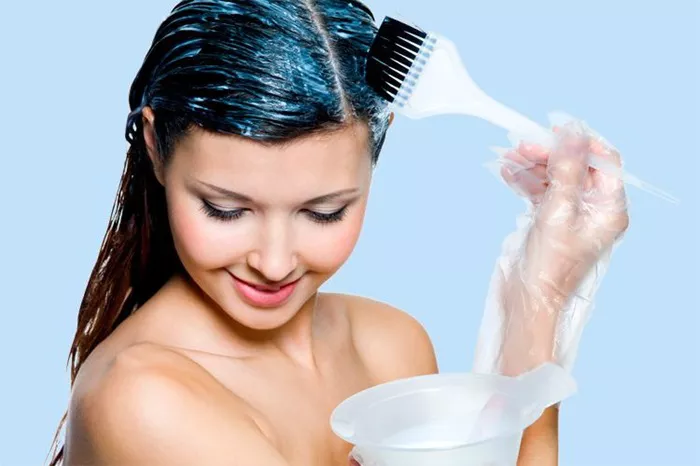Hair fall is a common concern faced by millions around the world, irrespective of age and gender. While it is normal to shed 50-100 hairs a day, excessive hair loss can lead to thinning, bald spots, and reduced confidence. The good news is that with the right approach, it is possible to reduce hair fall significantly—even within a week. In this guide, we’ll explore seven proven methods that can help you take control of your hair health, backed by expert hair health advice and practical steps you can start today.
1. Nourish Your Scalp with a Hot Oil Massage
A hot oil massage is a timeless remedy for strengthening hair roots and improving blood circulation to the scalp. Use oils like coconut, almond, or castor oil warmed to a comfortable temperature. Massage the scalp gently in circular motions for 10-15 minutes, and leave it overnight or at least for an hour before rinsing.
Oils nourish the hair follicles, reduce dryness, and provide essential nutrients such as Vitamin E and fatty acids. A daily massage for seven consecutive days can visibly reduce hair shedding and improve texture.
2. Improve Your Diet with Hair-Boosting Nutrients
What you eat has a direct impact on your hair health. For effective hair fall control, focus on including foods rich in:
- Protein (eggs, lean meats, legumes)
- Iron (spinach, lentils, red meat)
- Biotin (nuts, seeds, bananas)
- Omega-3 fatty acids (salmon, flax seeds, walnuts)
Start your 7-day plan by incorporating at least one hair-friendly meal a day. Hydration is also key, so drink 8–10 glasses of water daily to keep your hair hydrated from the inside.
3. Follow a Consistent Hair Care Routine
One of the most overlooked aspects of preventing hair fall is following a consistent and correct hair care routine. This includes:
- Washing hair 2–3 times a week with a sulfate-free, mild shampoo
- Using a conditioner after every wash to maintain moisture
- Air drying instead of using heat tools
If you’re unsure where to start, refer to this comprehensive guide on hair care tips to structure a proper hair care regimen that suits your scalp type and lifestyle.
4. Avoid Stress and Get Quality Sleep
Stress-induced hair fall, also known as telogen effluvium, is a condition where emotional or physical stress pushes hair follicles into a resting phase. To combat this, include relaxation techniques in your daily schedule, such as:
- Meditation or deep breathing for 10 minutes
- Gentle yoga or stretching routines
- Maintaining 7–8 hours of uninterrupted sleep
Sleep is when the body repairs and regenerates, including the hair follicles. A week of reduced stress and improved sleep can work wonders on your hair fall issues.
5. Use Natural Hair Masks
Natural hair masks made from ingredients in your kitchen can significantly reduce hair fall and improve shine. Here are three easy DIY masks you can use once or twice during the week:
- Yogurt and Honey Mask: Mix 2 tablespoons of yogurt with 1 tablespoon of honey. Apply on scalp and hair, leave for 30 minutes, then wash.
- Onion Juice Treatment: Onion juice boosts hair growth by increasing blood circulation. Apply fresh juice to the scalp for 15 minutes before rinsing.
- Aloe Vera Gel: Aloe has enzymes that repair dead skin cells and reduce itching. Apply pure gel to the scalp and let it sit for 20 minutes.
These masks nourish the scalp and can produce visible improvements in hair texture and volume within a week.
6. Protect Your Hair from Heat and Chemicals
Overuse of heat styling tools and chemical treatments weakens hair strands, making them prone to breakage and fall. During this 7-day anti-hair fall plan:
- Avoid blow dryers, curling irons, and straighteners
- Refrain from coloring, bleaching, or perming
- Protect hair from sun damage with hats or scarves when going out
Letting your hair breathe naturally helps it recover and strengthens the roots, reducing fall significantly.
7. Clean Your Hair Tools and Avoid Tight Hairstyles
Dirty hair brushes and combs harbor bacteria and residue that can contribute to scalp infections and increased hair fall. Make it a point to:
- Clean brushes and combs at least once a week
- Avoid sharing hair tools with others
- Use wide-toothed combs to minimize breakage
Additionally, avoid hairstyles that pull tightly on the roots, such as high ponytails or braids. These can lead to traction alopecia, a condition that causes permanent hair loss.
What Results Can You Expect in 7 Days?
While hair growth itself is a slow process, reducing hair fall within a week is achievable by addressing the root causes like poor scalp health, inadequate nutrition, and stress. Here’s what you may observe:
- Noticeably fewer strands on your pillow or hairbrush
- Softer and shinier hair due to nourishment
- Healthier scalp with less flaking or dryness
Consistency is the key. Following these strategies every day for seven days sets a strong foundation for long-term hair health.
Conclusion
Hair fall can be distressing, but it doesn’t have to be permanent. By implementing the seven techniques outlined above, you can take proactive steps toward reducing hair fall and promoting stronger, healthier hair. Whether it’s improving your diet, adopting better hair care steps, or managing stress, each action counts. Remember, your hair is a reflection of your overall well-being—treat it with the care and attention it deserves.
Start your 7-day journey today, and reclaim your confidence one strand at a time.
Related Topics:
- How Often Should You Wash Your Hair? Dermatologists Explain
- My Bouncy, Healthy Hair Is Thanks to This Margot Robbie-Approved Brand
- The Lazy Girl’s Guide to Healthy Summer Hair


